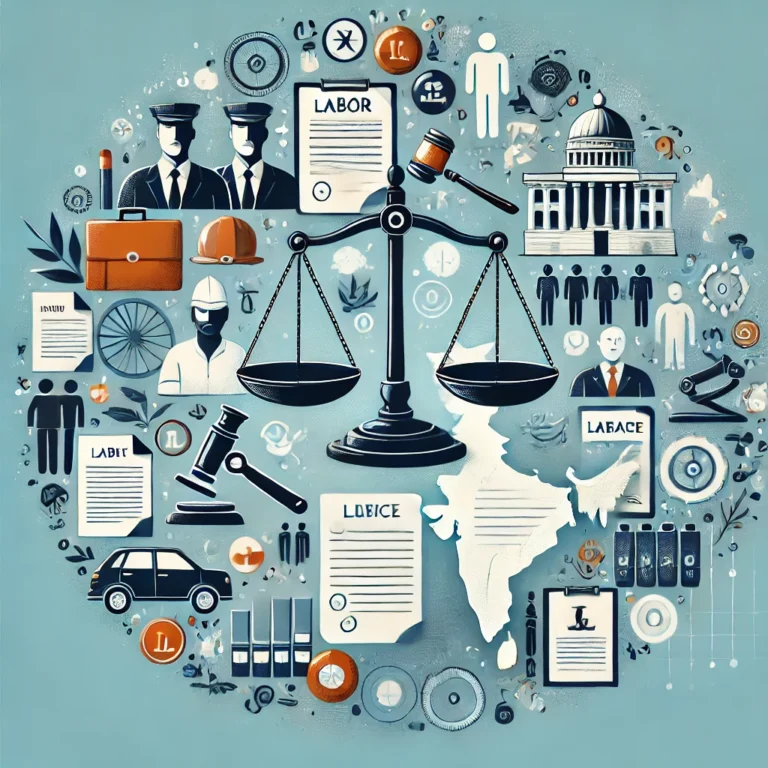Legal Insights in India: Navigating the Complex Landscape
India’s legal system is vast and complex, shaped by centuries of history, colonial influence, and modern developments. As the world’s largest democracy and a rapidly growing economy, India presents unique legal challenges and opportunities. In this blog, we will explore some key legal insights that are essential for businesses, professionals, and individuals navigating the Indian legal landscape.

1. The Indian Legal System: A Brief Overview
India’s legal system is a blend of the British common law system, traditional Indian laws, and modern statutory laws. The Constitution of India, adopted in 1950, is the supreme law of the land and lays down the framework for the functioning of the legal system.
- The Constitution: The Indian Constitution is the longest written constitution in the world. It provides for a federal structure with a clear division of powers between the central and state governments. Fundamental rights, directive principles, and duties of citizens are enshrined in the Constitution, ensuring a balance between individual liberties and state authority.
- Judiciary: India has a hierarchical judiciary with the Supreme Court at the apex, followed by High Courts in states and subordinate courts at the district level. The judiciary is independent and plays a crucial role in interpreting laws, protecting fundamental rights, and ensuring justice.
- Statutory Laws: India has a comprehensive set of laws enacted by the Parliament and state legislatures. These include criminal laws, civil laws, corporate laws, labor laws, and more. Some key statutes include the Indian Penal Code, the Companies Act, the Consumer Protection Act, and the Information Technology Act.
2. Corporate Law: Navigating the Business Environment
India’s corporate law landscape has undergone significant changes in recent years, making it crucial for businesses to stay updated with the latest developments.
- The Companies Act, 2013: The Companies Act, 2013 is the primary legislation governing corporate entities in India. It introduced several new concepts, such as the one-person company (OPC), corporate social responsibility (CSR), and stricter governance norms. Compliance with the provisions of this Act is essential for companies operating in India.
- Mergers and Acquisitions (M&A): The M&A landscape in India is governed by various laws, including the Companies Act, the Competition Act, and the Securities and Exchange Board of India (SEBI) regulations. The Competition Commission of India (CCI) plays a crucial role in ensuring that M&A transactions do not lead to anti-competitive practices.
- Foreign Direct Investment (FDI): India has a liberalized FDI regime, allowing foreign investments in various sectors with certain restrictions. The Reserve Bank of India (RBI) and the Ministry of Finance regulate FDI inflows, ensuring that they align with national interests.
3. Labor Laws: Balancing Rights and Responsibilities
India has a complex web of labor laws aimed at protecting workers’ rights while promoting industrial growth. However, compliance with these laws can be challenging for employers.
- The Industrial Disputes Act, 1947: This Act governs the resolution of industrial disputes and lays down the rights and obligations of employers and employees. It provides for the establishment of labor courts and tribunals to adjudicate disputes.
- The Code on Wages, 2019: As part of the labor law reforms, the Indian government has consolidated various wage-related laws into the Code on Wages, 2019. This Code aims to simplify wage regulation, ensure minimum wages for all workers, and eliminate gender discrimination in wages.
- The Occupational Safety, Health and Working Conditions Code, 2020: This Code consolidates various laws related to occupational safety, health, and working conditions. It applies to all establishments with 10 or more workers and mandates the provision of safe and healthy working environments.
4. Intellectual Property Rights (IPR): Protecting Innovation
India has made significant strides in strengthening its intellectual property rights (IPR) regime, making it a key player in the global innovation ecosystem.
- Patents: The Indian Patents Act, 1970, governs patent protection in India. It provides for the grant of patents for new inventions, ensuring that inventors have exclusive rights to their creations for a specified period. India is a member of the World Intellectual Property Organization (WIPO) and follows international patent norms.
- Trademarks: The Trademarks Act, 1999, provides for the registration and protection of trademarks in India. A registered trademark gives the owner exclusive rights to use the mark and protects against infringement. The Act also provides for the registration of collective marks and certification marks.
- Copyrights: The Copyright Act, 1957, governs copyright protection in India. It grants creators of original works (such as literature, music, films, and software) exclusive rights to their creations. India is a signatory to various international copyright treaties, including the Berne Convention and the TRIPS Agreement.
5. Data Protection and Privacy: Navigating the Digital Age
As India embraces digital transformation, data protection and privacy have become critical issues for businesses and individuals.
- The Information Technology Act, 2000: The IT Act is the primary legislation governing cybersecurity, data protection, and electronic commerce in India. It provides legal recognition to electronic transactions and sets out provisions for the protection of sensitive personal data.
- The Personal Data Protection Bill, 2019: India is in the process of enacting a comprehensive data protection law, the Personal Data Protection (PDP) Bill, 2019. The Bill seeks to regulate the collection, storage, and processing of personal data, ensuring that individuals’ privacy is protected. It also establishes a Data Protection Authority (DPA) to oversee compliance with the law.
- Data Localization: India has introduced data localization requirements, mandating that certain types of data (such as financial data) be stored within the country. This has significant implications for multinational companies operating in India.
6. Dispute Resolution: Effective Mechanisms for Conflict Resolution
India offers various mechanisms for dispute resolution, including litigation, arbitration, and mediation. Understanding these options is crucial for businesses to resolve conflicts efficiently.
- Litigation: Litigation in India is a lengthy and complex process, often burdened by a backlog of cases. However, the judiciary is actively working to reduce delays and ensure timely justice. Specialized courts, such as commercial courts and fast-track courts, have been established to handle specific types of disputes.
- Arbitration: Arbitration is a popular alternative to litigation, offering a faster and more cost-effective means of resolving disputes. The Arbitration and Conciliation Act, 1996, governs arbitration in India and aligns with international arbitration standards. India is a signatory to the New York Convention, making its arbitration awards enforceable in other member countries.
- Mediation: Mediation is a voluntary and confidential process in which a neutral third party helps the disputing parties reach a mutually acceptable solution. Mediation is increasingly being recognized as an effective means of resolving commercial disputes in India.
7. Compliance and Regulatory Framework: Staying on the Right Side of the Law
India has a robust compliance and regulatory framework that businesses must navigate to operate legally and ethically.
- The Goods and Services Tax (GST): The introduction of GST in 2017 marked a significant shift in India’s indirect tax regime. GST has replaced multiple taxes with a single unified tax, simplifying compliance for businesses. However, understanding the intricacies of GST and ensuring timely filing of returns is essential for avoiding penalties.
- The Prevention of Money Laundering Act (PMLA), 2002: The PMLA is a key legislation aimed at combating money laundering and terrorist financing. It imposes stringent compliance requirements on businesses, including maintaining records, conducting due diligence, and reporting suspicious transactions.
- The Foreign Exchange Management Act (FEMA), 1999: FEMA regulates foreign exchange transactions in India, including investments, borrowings, and remittances. Compliance with FEMA is crucial for businesses engaged in cross-border transactions to avoid legal complications.
8. The Future of Law in India: Emerging Trends and Challenges
As India continues to grow and evolve, its legal landscape will face new challenges and opportunities.
- Technology and Law: The rapid advancement of technology presents both opportunities and challenges for the legal system. Issues such as artificial intelligence, blockchain, and cybersecurity will require new legal frameworks and regulations.
- Environmental Law: With increasing awareness of environmental issues, India is likely to see stricter enforcement of environmental laws and the introduction of new regulations aimed at sustainability.
- Social Justice and Human Rights: India will continue to grapple with issues related to social justice, equality, and human rights. The legal system will play a crucial role in addressing these challenges and ensuring that the rights of all citizens are protected.
Conclusion
India’s legal system is complex and dynamic, reflecting the country’s rich history, diverse culture, and evolving economy. For businesses, professionals, and individuals, understanding the legal landscape is essential for navigating challenges and seizing opportunities. By staying informed and seeking expert legal advice, you can ensure compliance, protect your rights, and contribute to the rule of law in India.








